
Economics_-_New_Ways_of_Thinking
.pdf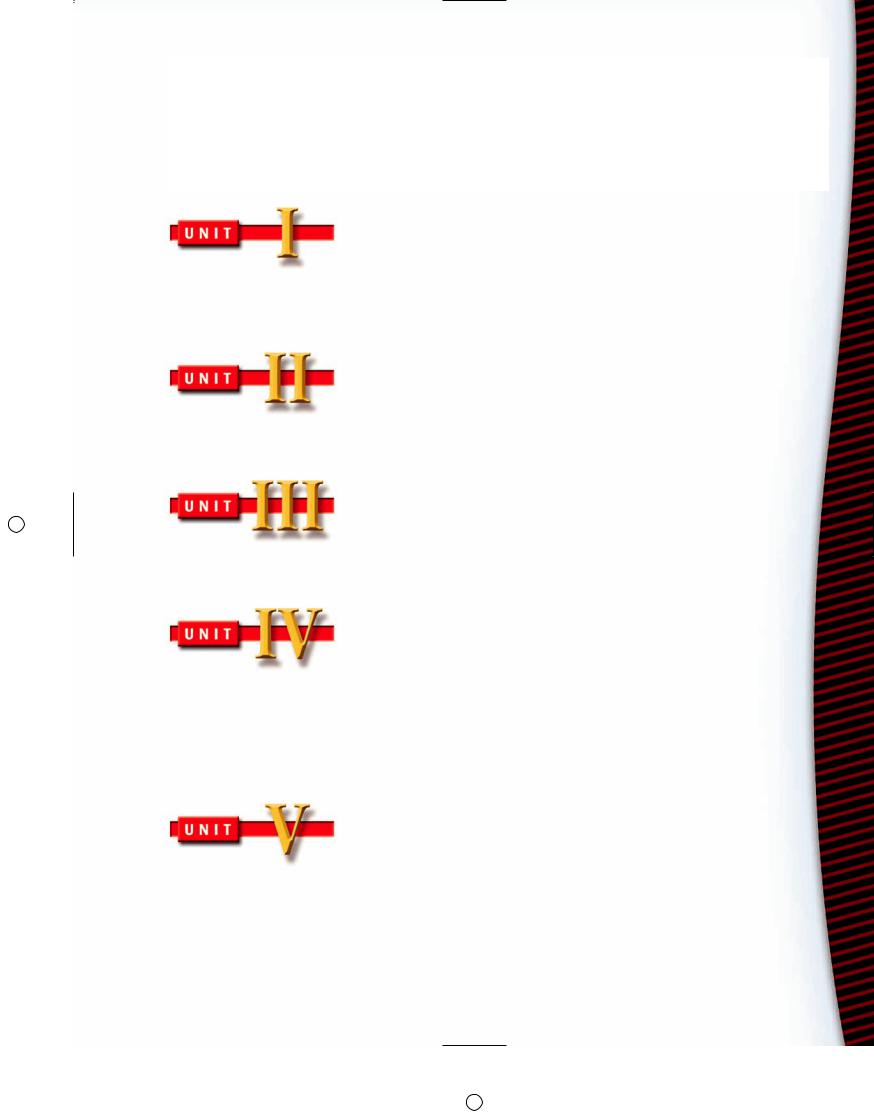
Contents in Brief
|
Introduction to Economics |
2 |
|
|
Chapter 1 |
What Is Economics? |
4 |
|
Chapter 2 |
Economic Systems and |
|
|
|
the Global Economy |
30 |
|
Chapter 3 |
Free Enterprise |
54 |
|
The Basics |
86 |
|
|
Chapter 4 |
Demand |
88 |
|
Chapter 5 |
Supply |
110 |
|
Chapter 6 |
Price: Supply and Demand Together |
128 |
|
Microeconomics |
154 |
|
|
Chapter 7 |
Business Operations |
156 |
|
Chapter 8 |
Competition and Markets |
186 |
|
Chapter 9 |
Labor, Employment, and Wages |
222 |
|
Macroeconomics |
252 |
|
|
Chapter 10 Money, Banking, and the |
|
|
|
|
Federal Reserve System |
254 |
|
Chapter 11 |
Measuring Economic Performance |
286 |
|
Chapter 12 |
Economic Changes and Cycles |
310 |
|
Chapter 13 |
Fiscal and Monetary Policy |
340 |
|
Chapter 14 |
Taxing and Spending |
364 |
|
Trade and Investment |
390 |
|
|
Chapter 15 |
International Trade and |
|
|
|
Economic Development |
392 |
|
Chapter 16 |
Stocks and Bonds |
428 |
vii
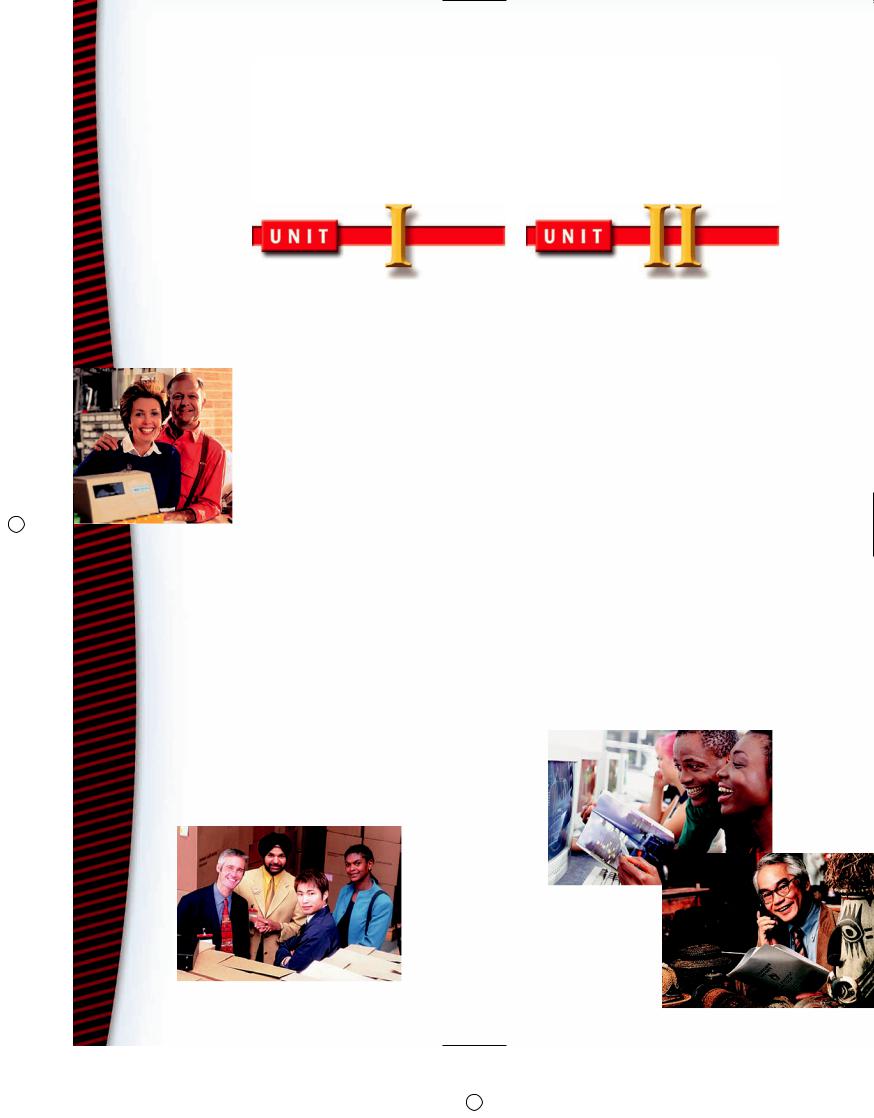
Contents
|
|
|
|
|
Introduction to Economics |
2 |
|
The Basics |
86 |
Chapter 1 What Is Economics? |
4 |
|
Chapter 4 Demand |
88 |
Section 1 |
The Foundation of Economics |
6 |
Section 2 |
The Economic Way of Thinking 13 |
|
Section 3 |
Basic Economic Language |
24 |
|
Chapter Assessment |
28 |
Section 1 |
Understanding Demand |
90 |
Section 2 |
The Demand Curve Shifts |
95 |
Section 3 |
Elasticity of Demand |
102 |
|
Chapter Assessment |
108 |
Chapter 2 Economic Systems and |
|
Chapter 5 Supply |
110 |
||
|
the Global Economy |
30 |
Section 1 |
Understanding Supply |
112 |
|
|
|
|||
Section 1 |
Economic Systems |
32 |
Section 2 |
The Supply Curve Shifts |
117 |
|
|
|
|||
Section 2 |
Globalization |
41 |
|
Chapter Assessment |
126 |
|
|
|
|
||
|
Chapter Assessment |
52 |
|
|
|
|
|
|
Chapter 6 Price: Supply and |
|
|
Chapter 3 Free Enterprise |
54 |
|
Demand Together |
128 |
|
Section 1 |
Characteristics of |
|
|
|
Free Enterprise |
56 |
|
Section 2 Profit and Loss in Free |
|
||
|
Enterprise |
62 |
|
Section 3 |
The Ethics of the Free |
|
|
|
Enterprise System |
66 |
|
Section 4 |
Entrepreneurs |
71 |
|
Section 5 |
The Role of Government in |
|
|
|
a Free Enterprise Economy |
74 |
|
|
Chapter Assessment |
82 |
|
|
|
|
|
|
|
|
|
Section 1 |
Supply and Demand Together |
130 |
||
Section 2 |
Supply and Demand in |
|
|
|
|
|
Everyday Life |
140 |
|
|
|
Chapter Assessment |
150 |
|
|
|
|
|
|
|
|
|
|
|
viii Contents
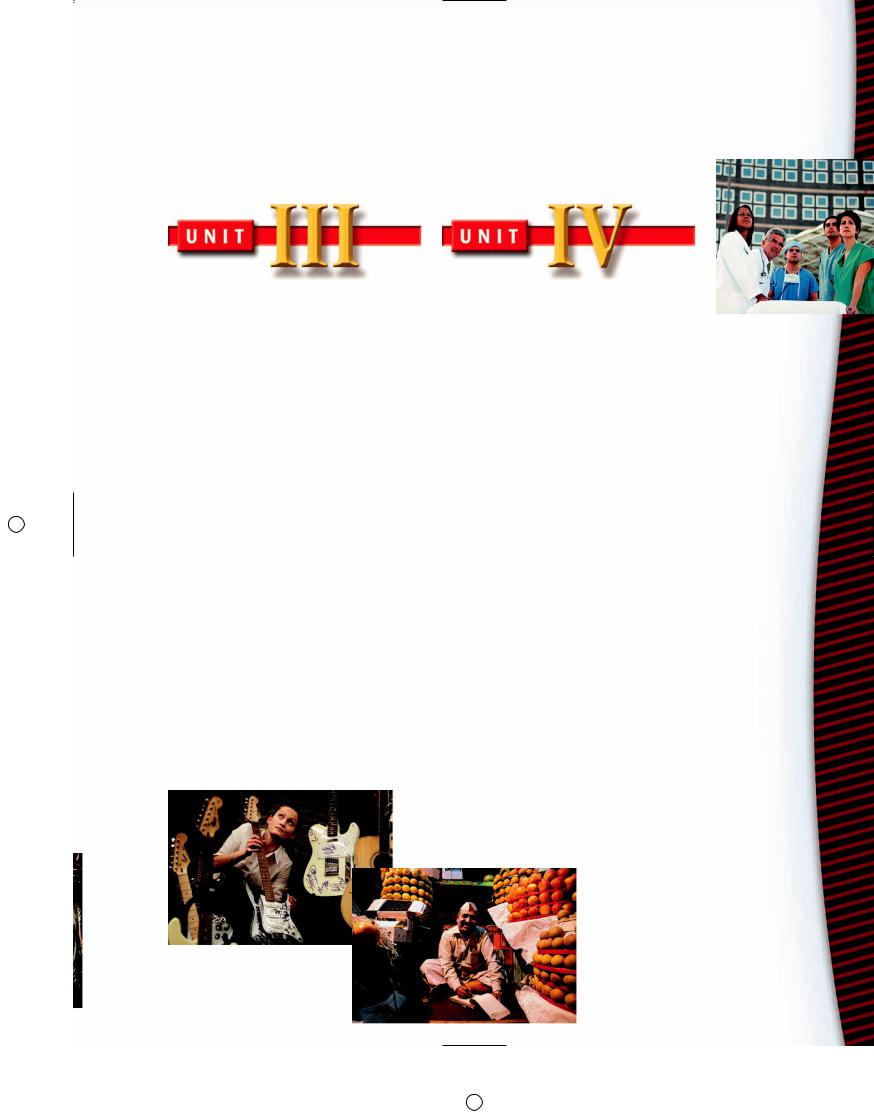
|
|
|
|
|
|
|
|
|
|
|
|
|
|
|
|
|
|
Microeconomics |
154 |
|
Macroeconomics |
252 |
|
|
||
Chapter 7 Business Operations |
156 |
|
Chapter 10 Money, Banking, and the |
|
|
|
||
|
|
|
|
|||||
Section 1 |
About Business Firms |
158 |
|
|
Federal Reserve System |
254 |
|
|
|
|
|
|
|
|
|||
Section 2 |
Costs |
172 |
|
Section 1 |
The Origins of Money |
256 |
|
|
|
|
|
|
|
|
|||
Section 3 Revenue and Its Applications |
176 |
|
Section 2 |
The Money Supply |
263 |
|
|
|
|
|
|
|
|
|
|||
|
Chapter Assessment |
184 |
|
Section 3 The Federal Reserve System |
270 |
|
|
|
|
|
|
|
|
|
|
||
|
|
|
|
Section 4 The Money Creation Process |
274 |
|
|
|
Chapter 8 Competition and Markets 186 |
|
Section 5 |
Fed Tools for Changing the |
|
|
|
||
Section 1 A Perfectly Competitive |
|
|
|
Money Supply |
280 |
|
|
|
|
|
|
Chapter Assessment |
284 |
|
|
||
|
Market |
188 |
|
|
|
|
||
|
|
|
|
|
|
|
||
Section 2 |
A Monopolistic Market |
194 |
|
Chapter 11 Measuring Economic |
|
|
|
|
Section 3 A Monopolistic Competitive |
|
|
|
|
|
|||
|
|
|
Performance |
286 |
|
|
||
|
Market |
206 |
|
|
|
|
||
|
|
|
|
|
|
|
||
Section 4 |
An Oligopolistic Market |
211 |
|
Section 1 |
National Income Accounting |
288 |
|
|
|
|
|
|
|
|
|||
|
Chapter Assessment |
220 |
|
Section 1 |
Measuring GDP |
293 |
|
|
|
|
|
|
|
|
|
||
|
|
|
|
Section 3 |
Real GDP |
297 |
|
|
Chapter 9 Labor, Employment, |
|
|
Section 4 |
Measuring Price Changes |
|
|
|
|
|
and Wages |
222 |
|
|
and the Unemployment Rate |
301 |
|
|
Section 1 |
What Determines Wages? |
224 |
|
|
Chapter Assessment |
308 |
|
|
|
|
|
|
|
|
|||
Section 2 Labor and Government |
|
|
Chapter 12 Economic Changes |
|
|
|
||
|
Regulation |
238 |
|
|
|
|
||
|
|
|
and Cycles |
310 |
|
|
||
|
Chapter Assessment |
248 |
|
|
|
|
||
|
|
|
|
|
|
|
||
|
|
|
|
Section 1 |
Inflation and Deflation |
312 |
|
|
|
|
|
|
Section 2 |
Business Cycles |
323 |
|
|
|
|
|
|
|
|
|||
|
|
|
|
Section 3 |
Economic Growth |
329 |
|
|
|
|
|
|
|
Chapter Assessment |
338 |
|
|
|
|
|
|
|
|
|
|
|
Contents ix
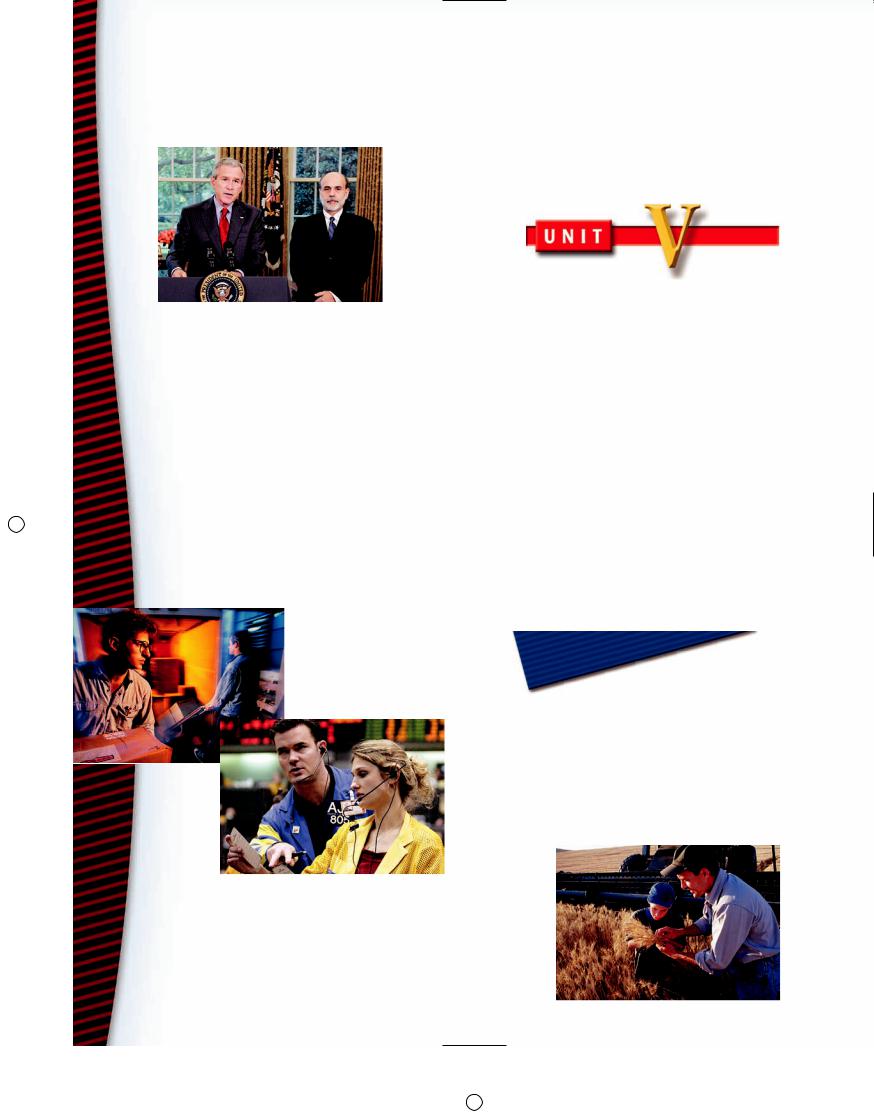
|
|
|
|
|
|
|
|
|
|
|
|
|
|
|
|
|
|
|
|
|
|
|
|
|
|
Trade and Investment |
390 |
|
|
|
|
|
Chapter 15 International Trade and |
|
|
Chapter 13 Fiscal and Monetary |
|
|
|
||
|
Policy |
340 |
|
Economic Development |
392 |
|
Section 1 |
Fiscal Policy |
342 |
Section 2 |
Monetary Policy |
351 |
Section 3 |
Stagflation: The Two Problems |
|
|
Appear Together |
357 |
|
Chapter Assessment |
362 |
Section 1 |
International Trade |
394 |
Section 2 |
Trade Restrictions |
407 |
Section 3 |
The Exchange Rate |
415 |
Section 4 |
Economic Development |
422 |
|
Chapter Assessment |
426 |
Chapter 14 Taxing and Spending |
364 |
Chapter 16 Stocks and Bonds |
428 |
|
|
Section 1 |
Taxes |
366 |
Section 2 |
The Budget: Deficits and Debt |
376 |
|
Chapter Assessment |
386 |
Section 1 |
Stocks |
430 |
Section 2 |
Bonds |
442 |
Section 3 |
Futures and Options |
450 |
|
Chapter Assessment |
456 |
Resource Center
|
Personal Finance Handbook |
461 |
|
Economic Skills Handbook |
479 |
|
Databank |
491 |
|
Glossary |
503 |
|
Spanish Glossary |
511 |
|
Index |
523 |
|
|
|
x Contents
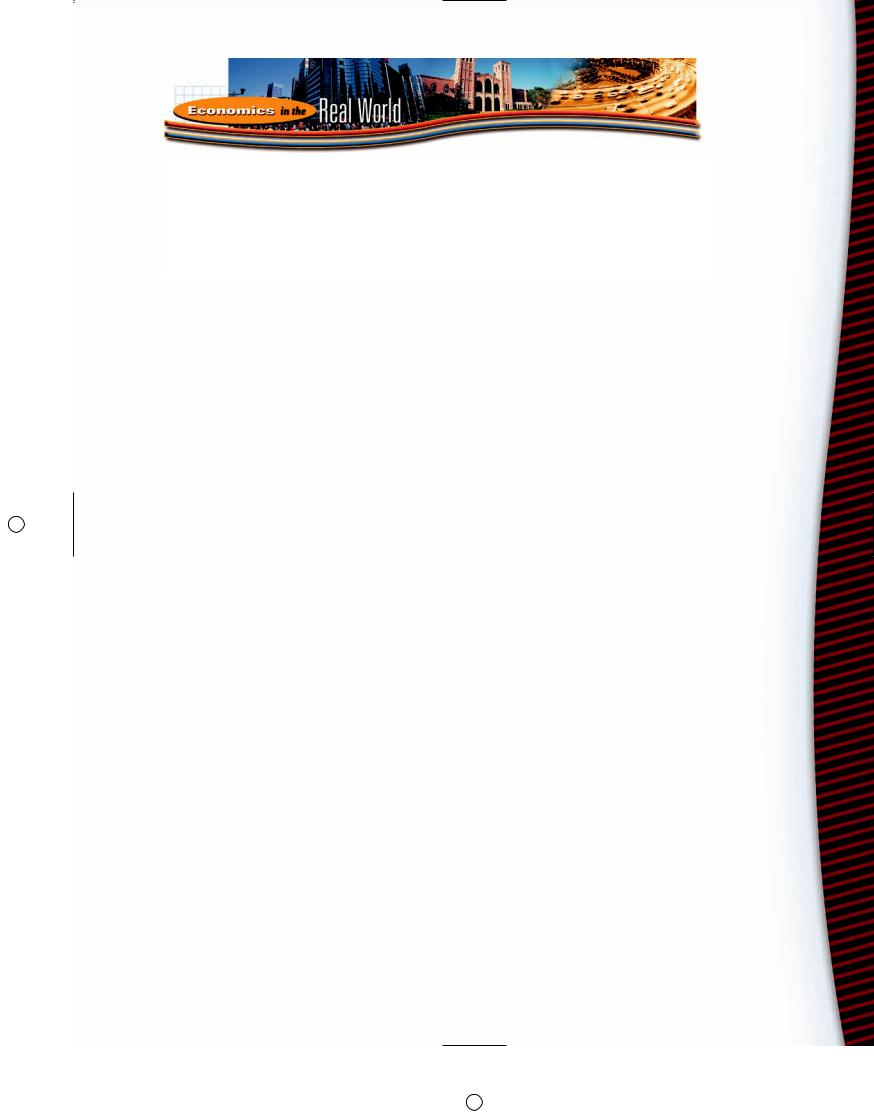
Chapter 1
Why Didn’t Chris Rock Go to College?
Do Seatbelts Cause Accidents?
Why Did British Troops Wear Bright
Red Uniforms?
Chapter 2
Do People Around the World Work the
Same Number of Hours?
What Should I Tip?
Will Globalization Change the
Sound of Music?
The Price Gap Between Brains
and Brawn: Is It Increasing?
Chapter 3
What Saved the Pilgrims?
Did the Airlines Overlook the
Overbooking Problem?
Why Is the iPod Scrollwheel So Slick?
Why Does McDonald’s Put Hash
Browns in Half-Sized Bags?
|
Why Is It So Easy to Put On Weight? |
174 |
|
9 |
How Much Time Should You Study? |
182 |
|
18 |
Chapter 8 |
|
|
|
|
||
26 |
Will the Internet Bring an End to |
|
|
Monopolies? |
198 |
||
|
|||
|
Why So Much for Such a Short Ride? 202 |
||
|
Do You Sometimes Choose to Pay |
|
|
34 |
Higher Prices? |
216 |
|
38 |
Could Your ZIP Code Cost You? |
218 |
|
44 |
Chapter 9 |
|
|
Do You Want the 1st or the 43rd Pick |
|
||
|
|
||
48 |
in the NFL Draft? |
228 |
|
Are Entertainers Worth Millions? |
231 |
||
|
|||
|
Will You Sleep Less if You Earn More? 241 |
||
64 |
When Is $50,000 Not $50,000? |
245 |
|
|
|||
69 |
Chapter 10 |
|
|
Would You Hear Hip-Hop in a Barter |
|
||
72 |
|
||
Economy? |
259 |
||
|
|||
80 |
What Is Money in a Prisoner of |
|
|
War Camp? |
266 |
||
|
|||
Chapter 4
Are the Prices at Disneyland Goofy?
New Coke, Classic Coke, or Pepsi?
Who’s Rockin’ with “Elasticity of Demand”?
Chapter 5
Are You Nicer to Nice People?
Why All the Reality TV Shows?
Where Do TiVo, Podcasts, and
Blogs Come From?
Will You Live to Be 100?
Chapter 6
How Much Would You Pay for an Ocean View?
Do You Speak Economics?
Who Feeds Cleveland?
Chapter 7
Should NASCAR Be Required
for an MBA?
|
How Is the English Language |
|
|
92 |
Like Money? |
278 |
|
98 |
Chapter 11 |
|
|
|
|
||
106 |
Is There Real GDP Growth in |
|
|
Your Future? |
299 |
||
|
|||
|
Did President Kennedy Earn More |
|
|
113 |
than Today’s President? |
304 |
|
114 |
What Is the All-Time Top-Grossing |
|
|
|
Movie? |
306 |
|
118 |
Chapter 12 |
|
|
122 |
Grade Inflation: When Is a B+ |
|
|
|
No Better than a C? |
318 |
|
|
Can You Have “Too Much Money”? |
321 |
|
133 |
Did the Great Depression Change |
|
|
135 |
the Country? |
327 |
|
Can Economic Growth Eliminate |
|
||
144 |
|
||
Politics? |
333 |
||
|
|||
|
Chapter 13 |
|
|
161 |
Can Batman Crowd Out the |
|
|
Box Office? |
345 |
||
|
Contents xi
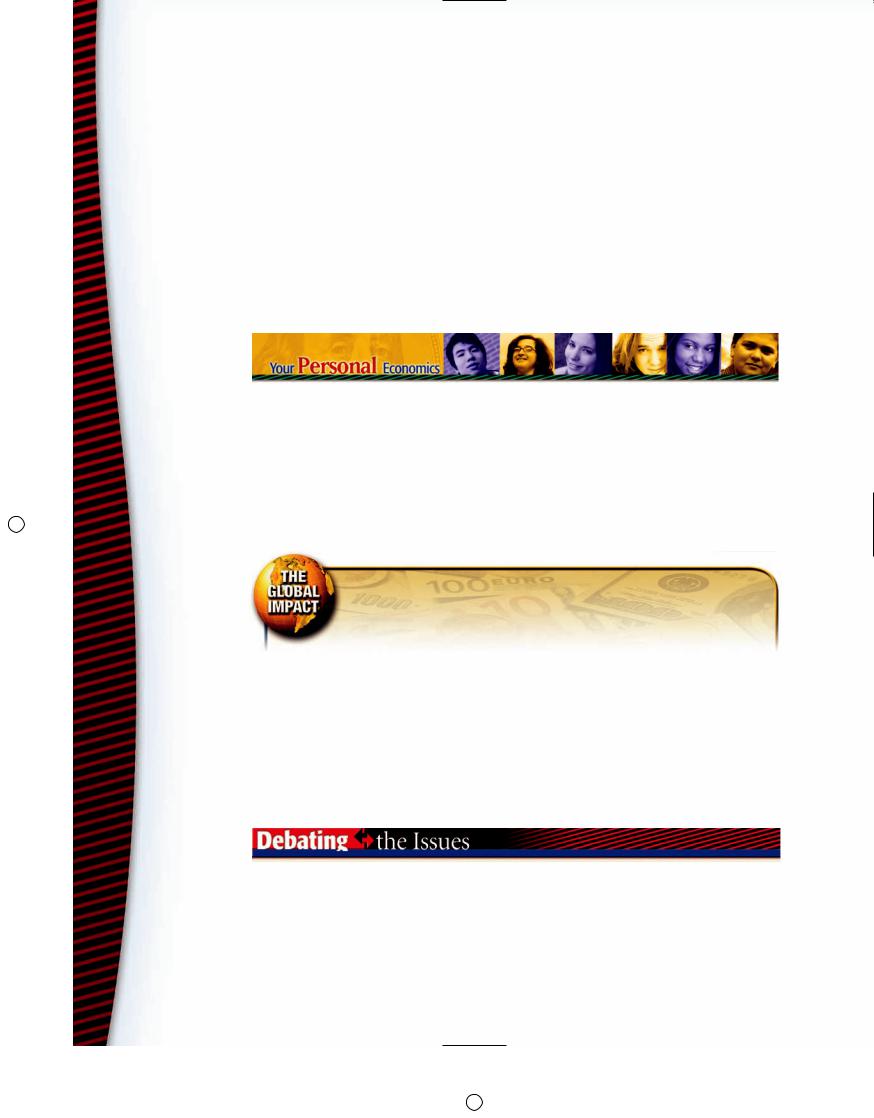
Can Monetary Policy Determine
Eye Color?
What Is The Wizard of Oz
Really About?
Why Does the Public Know So Little
About Economic Policy?
Chapter 14
Are You Paying Someone Else’s
Taxes?
Do Tax Rates Affect Athletic
Performance?
Would We All Be Better Off
Without Show-Offs?
|
Splitting the Check: Do You Order |
|
|
352 |
Lobster or a Hamburger? |
381 |
|
354 |
Chapter 15 |
|
|
To Mow, or Clean, or Both? |
399 |
||
|
|||
358 |
Might Someone in India Grade |
|
|
Your Homework? |
410 |
||
|
|||
|
Can Big Macs Predict Exchange Rates? 417 |
||
368 |
Chapter 16 |
|
|
Was the Great Crash the Culprit? |
435 |
||
|
|||
371 |
Picking Stocks: Darts or Analysts? |
439 |
|
|
|
||
|
Are Economists Poor Investors? |
445 |
|
379 |
Want to Make $1.3 Quadrillion? |
453 |
|
|
|
|
|
|
|
|
|
Spend a Little Now, |
|
Education—It’s Like Multiplying |
|
or a Lot More Later? |
22 |
Yourself |
236 |
Too Good to Be True? |
100 |
The Psychology of Credit Cards |
268 |
Investing in Yourself |
124 |
Your Goal: Generic, Not Specific, |
|
The WWW Gets You More for Less |
148 |
Human Capital |
336 |
|
|
||
Don’t Fall for an Old Scam |
204 |
Filing an Income Tax Return |
374 |
|
|
||
|
|
Jobs: Location Matters . . . Sometimes |
420 |
|
|
|
|
|
Ch 3 |
Economic Freedom |
65 |
Ch 10 Banks Becoming Partners |
272 |
|
|
|
Ch 4 Demand for Oil |
104 |
Ch 11 Exports and GDP |
300 |
|
||
|
Ch 5 Supply Goes Up, or Down? |
121 |
Ch 12 One Country Affects the Other |
324 |
|
||
|
Ch 6 |
Offshoring |
145 |
Ch 13 |
China and U.S. Prices |
360 |
|
|
Ch 7 |
Who Benefits? |
180 |
Ch 14 |
Tax Advantages |
385 |
|
|
Ch 8 |
Lower Taxes? |
210 |
Ch 15 |
Reduced Bargaining Power |
419 |
|
|
Ch 9 Wages Around the World |
234 |
Ch 16 |
Stocks Around the World |
449 |
|
|
|
|
|
|
|
|
|
|
|
|
|
|
|
|
|
|
|
|
|
|
|
|
|
|
Working After School: What Are |
|
What Is Government’s Role When |
|
the Trade-Offs? |
84 |
It Comes to the Economy? |
388 |
Should There Be Price Controls |
|
Is Free Trade the Best Policy for |
|
on Some Goods at Certain Times? |
152 |
the United States? |
458 |
Should There Be a Minimum Wage? |
250 |
|
|
|
|
|
|
xii Contents
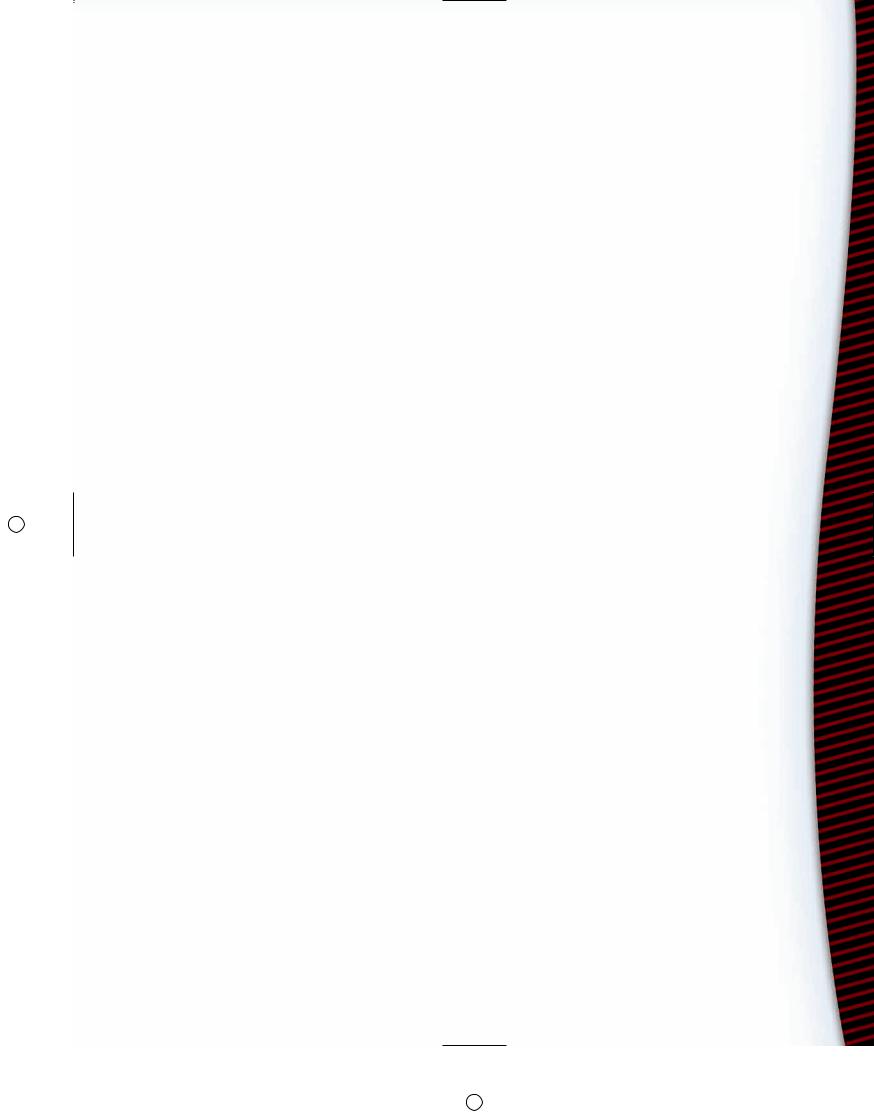
Exhibits
Chapter 1
1-1 Opportunity Cost
1-2 Production Possibilities Frontier
1-3 Economic Facts of Life
1-4 Two Major Branches of
Economics
Chapter 2
2-1 Index of Economic Freedom
Scores
2-2 Two Economic Visionaries
2-3 Globalization Facts
2-4 Globalization and Life
Expectancy
2-5 Annual Average Percentage Change in Output per Person in the 1990s
Chapter 3
3-1 Characteristics of Free Enterprise
3-2 The Circular Flow of Economic Activity in the U.S. Economy
3-3 An Ethical Economic System
Chapter 4
4-1 Demand Schedule and
Demand Curve
4-2 From Individual Demand Curves
to Market Demand Curve
4-3 Shifts in a Demand Curve
4-4 A Change in Demand Versus a Change in Quantity Demanded
4-5 Elasticity of Demand
4-6 Relationship of Elasticity of
Demand to Total Revenue
Chapter 5
5-1 Supply Schedule and Supply
Curve
5-2 Supply Curves When No More Can Ever Be Produced or There Is No Time to Produce More
5-3 From Firms’ Supply Curves to Market Supply Curve
5-4 Shifts in a Supply Curve
5-5 A Change in Supply Versus a Change in Quantity Supplied
|
5-6 |
Elasticity of Supply |
123 |
|
5-7 Average Annual Earnings by |
|
|
|
|
Level of Education |
124 |
8 |
Chapter 6 |
|
|
10 |
|
||
6-1 |
Supply and Demand at Work |
|
|
|
|
||
12 |
|
at an Auction |
131 |
|
6-2 |
Moving to Equilibrium |
132 |
19 |
6-3 |
Changes in the Equilibrium |
|
|
|
||
|
|
Price of Television Sets |
134 |
|
6-4 Changes in Both Supply and |
|
|
37 |
|
Demand |
137 |
39 |
6-5 |
Price Controls |
138 |
45 |
6-6 |
Rock Concert Ticket Price |
141 |
|
6-7 |
Supply and Demand on a Freeway 143 |
|
46Chapter 7
7-1 U.S. Manufacturers’ After-Tax
47 |
|
Profits per Dollar of Sales |
164 |
7-2 |
Advantages and Disadvantages |
|
|
|
|
||
|
|
of Different Types of Business |
|
57 |
|
Firms |
165 |
|
7-3 |
Structure of a Typical |
|
60 |
|
Corporation |
166 |
66 |
7-4 |
The Location of Firms |
170 |
|
7-5 |
Five Cost Concepts |
175 |
|
7-6 The Law of Diminishing |
|
|
93 |
|
Marginal Returns |
181 |
7-7 The Marginal Benefits and |
|
||
|
|
||
94 |
|
Marginal Costs of Studying |
182 |
|
|
|
|
95 |
Chapter 8 |
|
|
|
8-1 Is the Sky the Limit for the |
|
|
99 |
|
Monopolist? |
196 |
103 |
8-2 |
Antitrust Acts |
200 |
|
8-3 Conditions That Characterize |
|
|
107 |
|
Various Markets |
212 |
|
Chapter 9 |
|
|
|
9-1 The Demand for Labor |
225 |
|
115 |
9-2 |
The Supply of Labor |
225 |
|
9-3 Finding the Equilibrium |
|
|
|
|
Wage Rate |
226 |
115 |
9-4 |
The Demand for Radios, the |
|
|
|
||
|
|
Demand for the Workers Who |
|
116 |
|
Produce the Radios, and Their |
|
117 |
|
Wage Rates |
230 |
|
9-5 |
Right-to-Work States |
239 |
121 |
|
|
|
Contents xiii
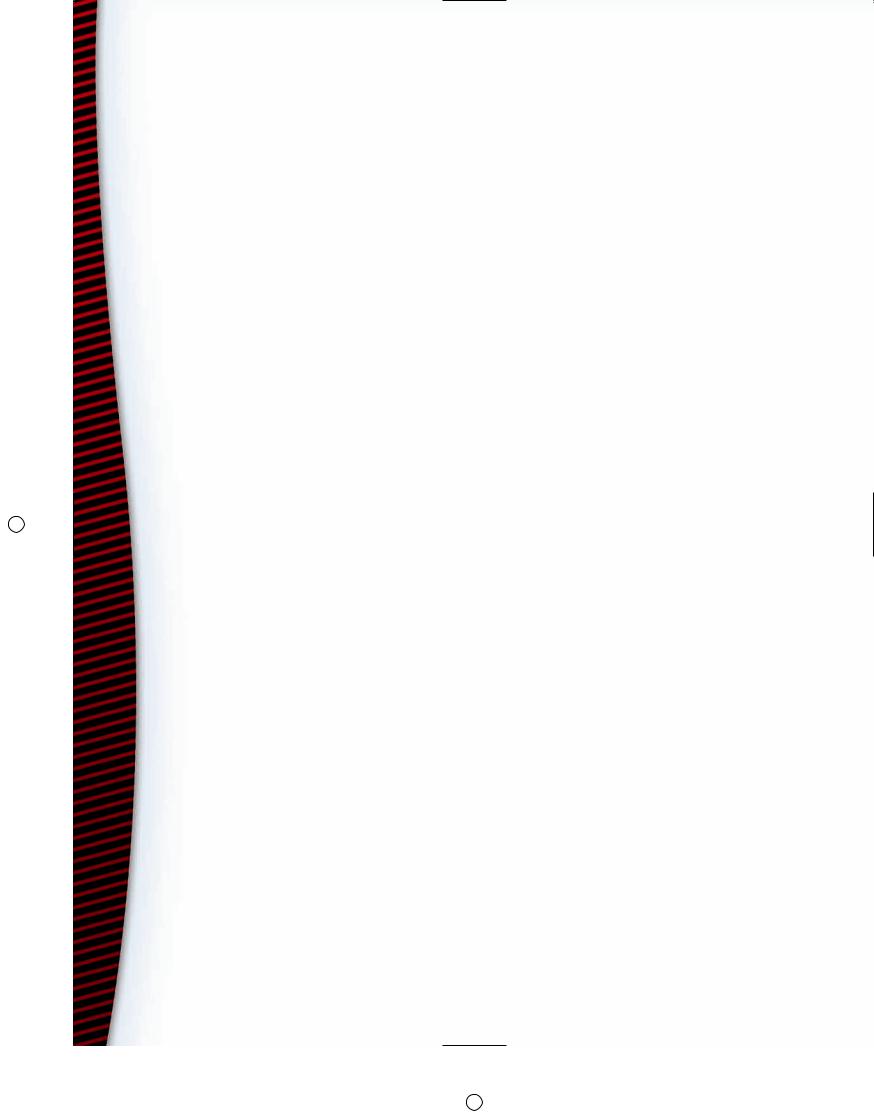
Chapter 10 |
|
12-8 |
Real GDP, 1980–2005 |
330 |
|
10-2 |
The Major Functions of Money |
261 |
12-9 |
Economic Growth from a |
|
10-2 |
Components of the Money |
|
|
Position Below and On a PPF |
331 |
|
Supply |
264 |
12-10 |
Liberals, Conservatives, and |
|
10-3 |
Federal Reserve Districts and |
|
|
Economic Growth |
333 |
|
Federal Reserve Bank Locations |
271 |
Chapter 13 |
|
|
|
|
|
|
||
10-4 The Check-Clearing Process
10-5 Reserves: Total, Required,
and Excess
10-6 The Banking System Creates
Demand Deposits (Money)
10-7 Fed Monetary Tools and Their Effects on the Money Supply
Chapter 11
11-1 Gross Domestic Product (GDP)
11-2 GDP in 2004, the World and
Selected Countries
11-3 What the GDP Omits
11-4 Gross National Product Does Not
Equal Gross Domestic Product
11-5 The Expenditures Made by the Four Sectors of the Economy
11-6 Computing GDP (2005, in
trillions of dollars)
11-7 Computing GDP and Real
GDP in a Simple, One-Good
Economy
273 |
13-1 |
Two Types of Fiscal Policy |
342 |
|
|
||||
275 |
13-2 |
The Effectiveness of Fiscal Policy |
347 |
|
13-3 |
A Hypothetical Laffer Curve |
350 |
||
|
||||
276 |
13-4 The Effectiveness of Monetary |
|
||
|
Policy |
353 |
||
|
|
|||
283 |
Chapter 14 |
|
||
14-1
289
14-2
14-3
290
14-4
291
14-5
292
14-6
294
14-7
295
14-8
Federal Tax Projections, |
|
2006–2011 ($ billions) |
366 |
Where the Money Comes From |
367 |
Three Income Tax Structures |
370 |
Countries with a Flat Tax |
370 |
How Many Days Do You Have |
|
to Work to Pay Your Taxes? |
372 |
Federal Individual Income Tax |
|
Categories |
373 |
Projected Federal Government |
|
Spending |
377 |
Projected Federal Budget |
|
Deficits, 2006–2011 |
384 |
298 Chapter 15
11-8 |
Calculating the Consumer |
|
15-1 |
Value of U.S. Exports and |
|
|
Price Index |
302 |
|
Imports, 1980–2005 |
395 |
11-9 |
CPI, 1995–2004 |
303 |
15-2 |
Number of Imported Cars, |
|
11-10 |
Aggregate Demand and |
|
|
1980–2005 |
396 |
|
|
|
|
||
|
Aggregate Supply |
305 |
15-3 |
The Benefits of Specialization |
|
11-11 |
Breakdown of the Total U.S. |
|
|
and Trade |
400 |
|
|
|
|
||
|
Population by Employment |
|
15-4 |
Hourly Compensation for |
|
|
Status |
307 |
|
Production Workers, Selected |
|
Chapter 12 |
|
|
Countries |
411 |
|
|
15-5 |
Exchange Rates |
416 |
||
12-1 |
Consumer Price Index (CPI), |
|
|||
|
|
|
|
||
|
1913–2005 |
313 |
Chapter 16 |
|
|
12-2 |
Inflation Rate, 1960–2005 |
314 |
16-1 |
The 30 Stocks of the Dow Jones |
|
12-3 |
Inflation |
314 |
|
Industrial Average |
432 |
|
|
|
|||
12-4 |
Aggregate Demand Increases |
|
16-2 Dow Jones Industrial Average: |
|
|
|
|
1928–June 2005 |
433 |
||
|
by More than Aggregate Supply |
315 |
|
||
|
|
|
|
||
12-5 |
The Simple Quantity Theory |
|
16-3 |
Translating Financial Talk |
436 |
|
|
|
|
||
|
of Money |
316 |
16-4 |
Reading the Stock Market Page |
|
12-6 |
Deflation |
320 |
|
of a Newspaper |
441 |
|
|
|
|||
12-7 |
The Phases of the Business Cycle |
323 |
|
|
|
xiv Contents
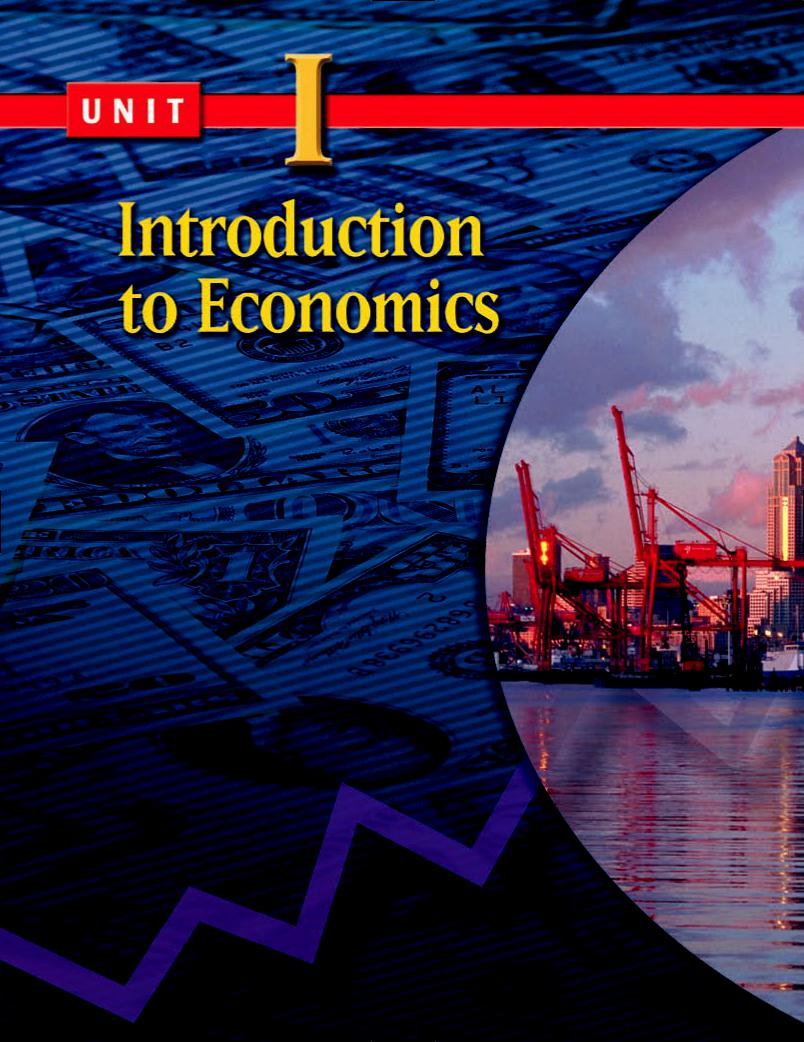
C H A P T E R 1
What Is Economics?
C H A P T E R 2
Economic Systems and
the Global Economy
C H A P T E R 3
Free Enterprise
2
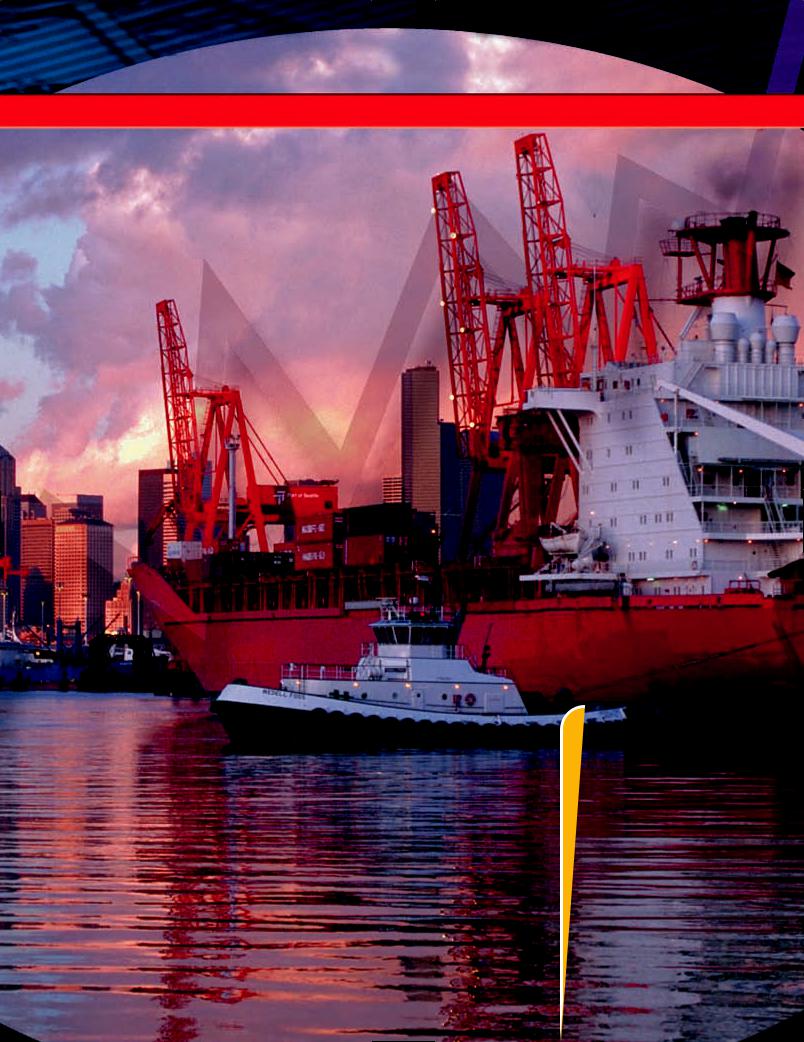
“Economics is a study
of men as they live
and move and think in
the ordinary business
of life.”
—ALFRED MARSHALL
3
